Table of Contents
Mughal Emperor Akbar
Akbar emerged as a highly influential emperor of the Mughal Empire in India, reigning from 1556 to 1605. Throughout his rule, he orchestrated the transformation of the empire into a formidable and prosperous nation. Even in contemporary India, Akbar’s legacy endures, with people celebrating him as a sagacious ruler who championed religious tolerance and embraced cultural diversity.
Mughal Emperor Akbar- Birth and Early Life
Akbar was born on October 15, 1542, in Umarkot, a small town in what is now Pakistan. He was the third Mughal emperor and the son of Humayun, who was forced to flee to Persia when Akbar was just a few months old. Akbar’s childhood was marked by constant warfare and political instability, as various factions vied for control of the Mughal Empire. At the age of 13, Akbar ascended to the throne after his father’s untimely death.
In his youth, Akbar confronted a multitude of challenges, ranging from rebellious governors to rival kingdoms. Despite these adversities, his prowess as a military strategist enabled him to swiftly establish himself as a formidable leader. Yet, Akbar’s most notable strength resided in his capacity to unite individuals from diverse cultures and religions. Renowned for his religious tolerance, he went so far as to invite representatives from various faiths to his court for debates and discussions on their beliefs.
Accomplishments of Mughal Emperor Akbar
One of Akbar’s notable achievements involved implementing the “Akbar Nama,” a groundbreaking legal code that established a consistent framework for justice and governance throughout the empire. This code played a crucial role in fostering stability and order. Additionally, Akbar implemented a new currency system, enhancing the economic strength of the empire.
Akbar’s enduring impact is perhaps best reflected in his advocacy for cultural diversity and religious tolerance. He actively supported the arts, attracting poets, musicians, and artists from diverse regions to his court. Moreover, he initiated the “Din-i-Ilahi,” a religion aimed at unifying the diverse religious practices within his realm. Although this faith did not achieve widespread acceptance, it underscored Akbar’s dedication to promoting religious harmony.
Rules of Mughal Emperor Akbar
Akbar, also known as Jalaluddin Muhammad Akbar, emerged as a prominent emperor within the Mughal Empire, spanning the Indian subcontinent from the early 16th to the mid-19th century. Renowned for his military conquests, administrative reforms, cultural innovations, and commitment to religious tolerance, this article will delve into Akbar’s governance and his views on religion.
- Akbar ascended to the Mughal throne at the age of 14 in 1556 after the sudden death of his father Humayun.
- At the time of his accession, the Mughal Empire was in a state of crisis due to internal conflicts and external threats from rival powers.
- Akbar, however, proved to be a remarkable leader who brought stability, prosperity, and expansion to the empire.
- One of Akbar’s notable achievements was his military conquests, which expanded the Mughal Empire to its greatest extent.
- He defeated several rebellious princes, Afghan chieftains, and Hindu Rajputs who challenged his authority.
- He also annexed several regions of central and southern India, such as Gujarat, Malwa, and Deccan, through a combination of diplomacy and force.
- However, Akbar’s rule was not just about conquest and domination. He also introduced several administrative reforms that aimed to centralize power, promote justice, and foster economic growth.
- He abolished the “jizya” or poll tax on non-Muslims, which had been a source of resentment and discrimination, and replaced it with a revenue system based on land assessment.
- He also established a new capital city in Fatehpur Sikri, which became a center of art, architecture, and culture.
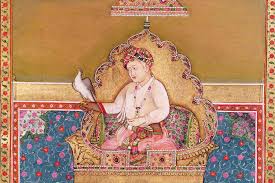
Religious Views of Mughal Emperor Akbar
- Akbar’s religious views were unconventional for his time, diverging from the traditional Sunni environment in which he was raised.
- Exposure to various faiths, including Hinduism, Christianity, Zoroastrianism, and Jainism, shaped Akbar’s diverse religious perspectives.
- A deep interest in religion and philosophy motivated Akbar to seek a synthesis of faiths that could promote peace and harmony.
- Rejecting the idea of any single religion holding a monopoly on truth, Akbar believed all religions had something valuable to offer.
- Akbar identified as a spiritual seeker beyond sectarian divisions, emphasizing a universal perspective.
- To realize religious pluralism, Akbar implemented radical measures, such as abolishing the “jizya” tax on non-Muslims.
- Akbar invited scholars from different faiths to engage in dialogues and debates at his court, fostering an atmosphere of religious diversity.
- To symbolize his commitment to religious harmony, Akbar created a new religion, Din-i Ilahi (Divine Faith), incorporating elements from Islam, Hinduism, Zoroastrianism, and Christianity.
However, Akbar’s religious policies were not always successful or popular. Some Muslim scholars criticized him for deviating from the orthodox teachings of Islam and accused him of blasphemy. Some Hindu Rajputs also resented his attempts to integrate them into the Mughal system and saw him as a foreign invader. Nonetheless, Akbar’s legacy of religious tolerance and cultural synthesis inspired later rulers of the Mughal Empire, such as Jahangir and Shah Jahan, and left a lasting imprint on Indian history and culture.
Mughal Emperor Akbar’s Religious Policies
- Akbar’s rule and religious views were characterized by innovation, diversity, and tolerance. He was a visionary leader who transformed the Mughal Empire into a formidable power and a cultural melting pot.
- He also challenged conventional notions of religion and identity and promoted a new paradigm of pluralism and dialogue.
- Although his ideas were not always accepted or understood, his legacy continues to inspire generations of scholars, artists, and activists who seek to embrace diversity and foster mutual respect.
- Despite the controversy and criticism that surrounded Akbar’s religious policies, it is undeniable that his reign was a golden era of cultural and intellectual flourishing in India.
- His court attracted scholars, artists, and thinkers from all over the world, who contributed to a vibrant exchange of ideas and perspectives.
- Akbar himself was a patron of the arts and literature and commissioned several magnificent works of architecture, such as the famous Taj Mahal.
- Akbar’s legacy also extends beyond the realm of religion and culture.
- He was a shrewd administrator who introduced many reforms that improved the lives of his subjects.
- He reformed the Mughal army, established a new legal code, promoted trade and commerce, and encouraged the development of agriculture and industry.
- He also built many public works, such as roads, canals, and wells, that benefited the people.
In conclusion, Akbar was a Ruler whose rule and religious views were characterized by innovation, diversity, and tolerance. His reign was a transformative period in Indian history that laid the foundations for a rich and pluralistic culture. Although his vision of a universal religion may not have been fully realized, his legacy of tolerance and cultural synthesis continues to inspire us today.
Battles of Mughal Emperor Akbar
Akbar the Great was one of the most famous rulers of the Mughal Empire in India, and his reign is remembered for its military campaigns and battles. Akbar was an astute strategist and a skilled commander who led his army to many victories against various enemies. In this article, we will look at some of the most notable battles of Akbar’s reign.
Second Battle of Panipat (1556)
The Battle of Panipat was one of the most significant battles of Akbar’s early reign. It was fought between the forces of Akbar’s regent, Bairam Khan, and Hemu, a Hindu king who had seized control of Delhi. Akbar, who was only 13 years old at the time, accompanied the Mughal army to the battlefield. The battle was fierce, and both sides suffered heavy casualties. In the end, Bairam Khan emerged victorious, and Hemu was captured and executed. This battle cemented Akbar’s position as the ruler of the Mughal Empire and marked the beginning of his long reign.
Second Battle of Panipat Continued(1556)
Akbar’s army clashed with a combined Hindu-Muslim force, led by Hemu, in the Second Battle of Panipat near present-day Haryana. Despite being outnumbered, Akbar’s forces prevailed through clever tactics. Hemu was captured and executed, solidifying Akbar as the uncontested ruler of North India.
Battle of Haldighati (1576)
The Battle of Haldighati unfolded between Akbar’s army, under the command of Raja Man Singh, and the forces led by Maharana Pratap of Mewar. Set in the mountainous terrain near Haldighati town in Rajasthan, Maharana Pratap’s outnumbered troops valiantly resisted, holding their position for several hours. In the end, Akbar’s forces emerged triumphant, forcing Maharana Pratap to retreat to the mountains. This historic clash is remembered for its fierce engagement and the courage displayed by both opposing sides.
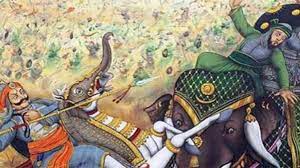
Battles of Siege of Chittorgarh (1567)
The Siege of Chittorgarh was a significant battle in the history of the Mughal Empire. The Mughal forces, led by Akbar, besieged the fortress city of Chittorgarh, which was controlled by Rana Udai Singh II. The siege lasted for several months, during which the Mughal forces faced stiff resistance from the defenders. In the end, the Mughals managed to breach the walls of the fortress and capture the city. The siege of Chittorgarh is remembered for the bravery of the defenders and the determination of the Mughal forces.
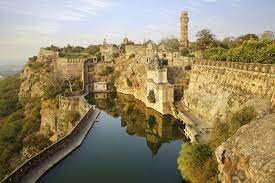
Battle of Rakht-Talai (1576)
The Battle of Rakht-Talai was fought between Akbar’s forces and the forces of the Afghans led by Muhammad Hakim. The battle took place near the town of Rakht-Talai in present-day Uttar Pradesh. The Afghan forces were well-equipped and well-trained, but Akbar’s forces managed to defeat them using superior tactics and strategy. Muhammad Hakim was killed in the battle, and his forces were forced to retreat.
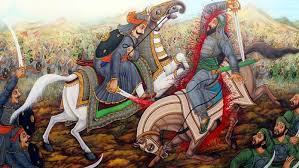
In conclusion, Akbar the Great was a skilled commander and a successful strategist who led his army to many victories. His battles are remembered for their intensity, bravery, and strategic significance. They played a crucial role in the consolidation of the Mughal Empire and the expansion of its territories.
Navratans of Emperor Akbar
Mughal Emperor Akbar held a high regard for intellectual discourse, offering patronage to a group of exceptionally talented individuals summoned to his court. Recognized as the Nava Ratnas, or the Nine Gems, these individuals hailed from diverse backgrounds, and the emperor esteemed them for their distinctive skills.
| List of Navratnas of Emperor Akbar | ||
| SNo. | Nava Ratnas | Description |
| 1 | Raja Todar Mal | He was finance minister in the court of King Akbar. He also introduced standard weights and measures. Raja Todat Mal was awarded the title of Diwan-i-Ashraf by Emperor Akbar. |
| 2 | Abul Fazel | Abul Fazel was a historian in the Mughal Emperor Akbar’s court. He authored Akbarnama |
| 3 | Faizi | He was the brother of Abu Fazel and a Persian poet by profession. The Persian version of the Mahabharata was translated under his direction. |
| 4 | Fakir Aziao Din | Fakir Aziao Din was one of the chief advisors of Akbar and practised Sufi music. |
| 5 | Tansen | He was a great poet and musician in the court of Mughal Emperor Akbar. He was awarded the title of Mian by Akbar. |
| 6 | Abdul Rahim Khan-i-Khanan | He was the son of BAiram Khan. Abdul Rahim Khan-i-Khanan was a poet who translated Baburnama into Persian. |
| 7 | Raja Man Singh | He was the brother of king Akbar’s wife, Jodhabai, and was one of the most trusted generals of Akbar. |
| 8 | Mirza Aziz Koka | He was also known as Khan-i-Azam, He was the foster brother of Mughal Emperor Akbar. |
| 9 | Raja Birbal | The original name of Raja Birbal was Mahesh Das. King Akbar gave him the title of Raja and Birbal. |

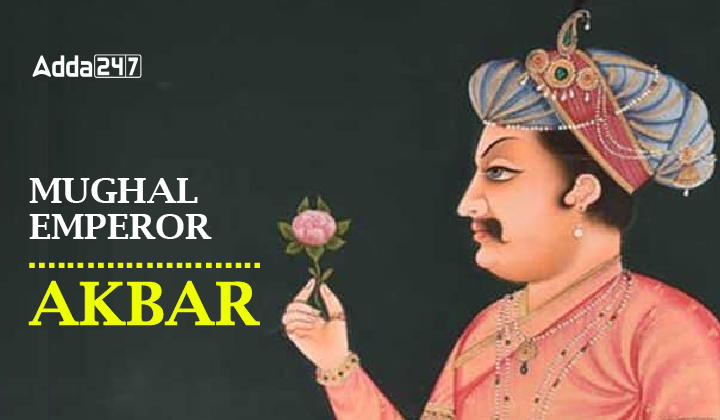

 TSPSC Group 1 Question Paper 2024, Downl...
TSPSC Group 1 Question Paper 2024, Downl...
 TSPSC Group 1 Answer key 2024 Out, Downl...
TSPSC Group 1 Answer key 2024 Out, Downl...
 Cabinet Ministers of India 2024, New Cab...
Cabinet Ministers of India 2024, New Cab...







